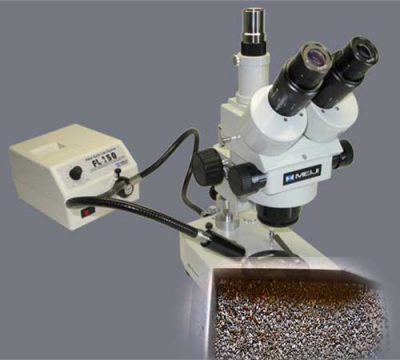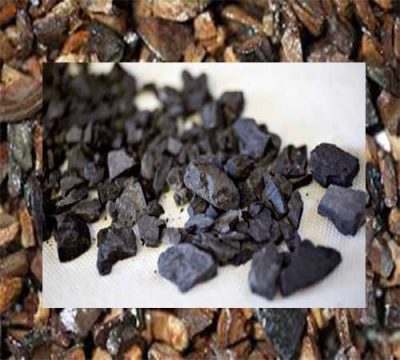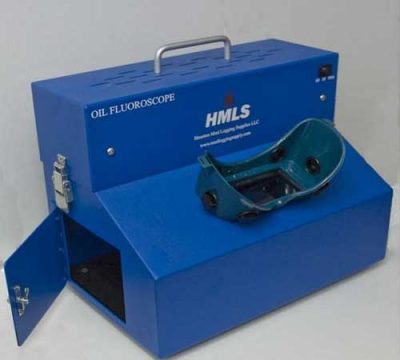Notice of Continuance Oil Well Drilling
Cuttings descriptions should be done in a consistent order, thus minimizing the chance of missing something out. A conventional order is laid out below, although some operating companies have peculiarities of their own. The common rocks found while drilling oil wells can be split into three categories, namely:
a) Claystone and Siltstone
b) Carbonates and Evaporites
c) Sandstone
Drill cuttings can be group into Clastic, Carbonates and Evaporites:
Clastic
Clastic sediments are sediment consisting of fragments of rock, transported from elsewhere and redeposited to form another rock. (Claystone, Siltstone and Sandstone).
Carbonates
Carbonates are rocks composed of lime mud and/or biogenic debris (shell fragments, algal structures etc.), or their recrystallisation products.
Evaporites
Evaporites are rocks deposited either by the direct evaporation of a body of water, or by a continuous process, whereby minerals are deposited at or near a terrestrial surface, as water evaporates from that surface.
The method of description varies slightly for each category.
Claystone and Siltstone
a) Rock Name Self explanatory but be aware that what looks like a Siltstone, is often a micromicaceous Claystone
b) Colour Colour or combination of colours (e.g. pinkish brown) can be used with qualifiers such as pale, light or dark.
c) Hardness Typical terms used are: Soft, Firm, Moderately Hard, Hard. These have specific meanings. Soft grains offer no resistance to the probe when prodded. Firm grains break apart easily, Moderately Hard grains break with some difficulty. Hard grains are difficult to break at all, and tend to fly out from under the probe. Brittle is sometimes used, particularly when describing Coal or Salt, to describe relatively hard rocks that break easily along fracture planes.
d) Break A term used to describe the morphology of the cuttings. Examples are Blocky (breaking into rectangular fragments), Angular (majority of corners are less that 90°), Splintery (pointed, elongated cuttings), Fissile and subfissile (having more or less well-developed laminar or platy structure). Amorphou s means having no form, and is commonly used to describe soft cuttings.
e) Swelling This describes the tendency of cuttings to absorb water over a period of time. It is notoften described in oil based muds as oil on the cuttings surface can affect absorption. Conversely, washing with detergent sometimes gives an over enthusiastic reaction. Common terms used are Hydro- or Hygroturgid (swelling in a random manner), Hygrofissile (swelling into small flakes) and are usually qualified by 'slightly', moderately' or 'very'. The term Cryptofissile may be used, this describes a similar reaction to hygrofissile but induced by 10% HCl.
f) Modifiers Not all rocks are composed of one grain type. Argillaceaous is used with non-Claystones with recognisable clay content. Similarly the terms Silty and Sandy can be used. (Arenaceous is interchangeable with Sandy)
g) Carbonate content: Calcareous with the qualifiers 'Non', 'Slightly', 'Moderately' or 'Very' describe the way in which a cutting reacts in 10% HCl. Dolomitic is used to describe a cutting that reacts only after several minutes immersion or after warming. Be aware that oil based mud residue also inhibits reaction times therefore cuttings should be crushed to expose fresh surfaces.
h) Accessories These are the small quantities of other minerals present in the major lithology. Examples are Pyrite (which may be described as disseminated i.e. fine grains scattered throughout the rock, or nodular i.e. a crystalline mass), Glauconite, Mica, (which may be prefixed with micro to describe the fine disseminated form.) and Carbonaceous. The usual qualifiers of quantity can be used with these minerals (i.e. 'slightly' etc.); also used are common, locally (specific to some horizons) and occasionally (scatted randomly throughout).

Carbonates and Evaporites
Carbonates are rocks composed of lime mud and/or biogenic debris (shell fragments, algal structures etc.), or their recrystallisation products. Evaporites are rocks deposited either by the direct evaporation of a body of water, or by a continuous process, whereby minerals are deposited at or near a terrestrial surface, as water evaporates from that surface. Both Limestone and Gypsum/Anhydrite are prone to conversion to Dolomite after burial, when subjected to Mg rich ground waters. In the Zechstein sequence of the Southern North Sea, intergrown masses of Anhydrite and Dolomite are commonly seen, in which it is difficult to determine the dominant constituent. Care must be taken when washing samples containing salts to avoid dissolving the cuttings. It often best to wash them with base oil only.
a) Rock Name Self-explanatory. Identification of more obscure evaporite minerals can be difficult. Most Calcium Sulphate is Anhydrite at bottom hole temperature and pressure, but tends to hydrate due to bit and mud action.
LIMESTONE, DOLOMITIC LIMESTONE, CALCITIC DOLOMITE, DOLOMITE
This can be determined by placing a few grains of the carbonate into a miniature test tube, in practice it is usually carried out on the watch glass, adding a few drops of 5% Hydrochloric Acid.
Hydrochloric Acid Reaction
Limestone (90-100% CaCO3) Instant violent reaction, specimen dissolves within approximately 5 minutes
Dolomitic Limestone (50-90% CaCO3) Moderate but continuous reaction
Calcitic Dolomite (10-50% CaCO3) Weak initial reaction but accelerating after a few minutes
Dolomite (<10% CaCO3) Hesitant. Beads slowly forming during up to half an hour
Alizarin Stain Test
Also, there is a chemical test which can be carried out to determine the presence of the Ca++ ion. This is known as the Alizarin Stain test and takes just a minute or so.
The mudlogging unit should have a supply of the reagent made up. The reagent is added to a miniature test tube containing a few pieces of the carbonate. After a minute, check the colour of the cuttings.
If they are pure calcite ie. Limestone, the cuttings are stained red, if they are pure dolomite, the cuttings are unstained.
EVAPORITE
| Rock Type | Identification |
| Na-Salt – HALITE (Rock Salt): | Soluble – recognizable by taste |
| K-Salt (Potassium salt): | Very soluble – has a bitter taste |
| Mg-Salt (Magnesium salt): | Extremely soluble – it feels like is effervescing or prickling on the tongue. |
| GYPSUM: | Turns white if held over a flame (also floats on bromoform). |
| ANHYDRITE: | Remains clear if held over flame (sinks in bromoform) It should be possible to recognize three different types of anhydrites. |
a). Bedded Anhydrite – which is usually white or lightly colored and translucent to opaque. Often is possible to see bedding in cuttings samples
b). Void filling Anhydrite – transparent crystal with well-defined cleavage
c). Replacement Anhydrite – lightly coloured and translucent to brown in colour
Tests for Evaporites Minerals
| Method | Anhydrite | Gypsum | Calcite |
| Reaction with Hydrochloric acid | No Reaction | No Reaction | Violent Reaction Production of CO2 |
| Barium Chloride Test (note1) | White Precipitate of barium sulphate | White Precipitate of barium sulphate | No Reaction |
| Density: using Bromoform s.g 2.90 | Anhydrite s.g. 2.9 to 2.98 – sinks | Gypsum s.g. 2.31 to 2.32 – floats | |
| Polarizing Microscope (note2) | Right-angled cleavage, marked polarization tints | Slight refractivity grey to whitish tints |
NOTE 1 dissolve in dilute boiling HCl for 5 mins; add a few drops of a normal BaCl2 solution.
NOTE 2 grind sample moderately fine and place a few grains in a drop of water on a slide, cover with a cover slip.
PROBLEMS
There are a number of problems that may arise for the geologist when describing cuttings whilst drilling evaporite sequences.
If you are drilling the section with a salt saturated mud system to reduce washouts, drilling fluid salts may precipitate out and appear at the shakers. Check with the mud engineer. Remember to keep fresh samples of mud chemicals in the mudlogging unit.
As Na- K- MG- salts are very soluble it is often difficult to evaluate the percentages of salts to anhydrite in samples taken from the shakers. Obviously, the samples should not be washed in water until salt proportion has been estimated. However, if drilling salt and anhydrite, the ROP will help as anhydrite drills slower (much slower) than salts and slower usually than carbonates.
Anhydrite often reaches the surface as a soft white paste which may wash through even fine sieves. Also, the Anhydrite may become hydrated in the mud column and you may see it as gypsum in the sample. So, what appears as Gypsum may in fact be Anhydrite in the formation. Gypsum is unstable below about 2500 feet however and loses water to the formation, becoming Anhydrite.
NOTE: Wellsite geologist should determine casing point at competent formation to set casing before drilling through evaporites intervals.
An example Anhydrite description follows:
ANHYDRITE : White, opaque to translucent, occasionally colourless and transparent, hard, cryptocrystalline, with rare thin very light grey Limestone laminations, nil visible porosity, no shows.
An Example Salt description also follows:
HALITE: colourless and transparent to very light brownish grey, transparent to
translucent, firm, brittle, crystalline, locally grading to K-SALT: moderate reddish orange, hard, brittle, crystalline to locally amorphous, with rare thin dark reddish brown saliferous CLAYSTONE laminations.
b) Colour In addition to the terms outlines above, some minerals are described as Colourless. These, and some coloured minerals, also allow the transmission of light and can be further described as Transparent (clear) or Translucent (semi-opaque).
c) Hardness As above.
e) Break As above.
f) Texture This is used to describe the internal structure and or composition of the cuttings. Terms used include Microcrystalline (having a crystal structure that is not visible except under the higher power lenses of the microscope), Crystalline (having an easily seem crystal structure), Cryptocrystalline (crystalline in appearance but having no visible structure, commonly applied to Chert). Sucrosic can be used to describe a fine-grained rock that has a sugary appearance. Texture in Limestones can be described using Dunham's classification (Wackestone, Packstone etc.) which can be found in manuals and is based on the proportions of lime mud to skeletal fragments. The term Oolitic may also be used when Limestone contains spheroids of algal origin.
An example of a limestone description may be seen below:
LIMESTONE: Bioclastic Wackestone, yellowish grey to light greenish grey, fine to medium grained, firm to moderately hard, brittle, blocky, chalky in places, with occasional dark greenish grey Claystone laminations, rare very fine pyrite cubes, locally pitted, trace disseminated carbonaceous material, trace visible intergranular porosity, no shows
An example dolomite description also follows:
DOLOMITE: Sucrosic, brownish grey, hard, brittle, traces of bivalve fragments, fair visible intercrystalline primary porosity, good to excellent inferred vuggy porosity (from loose medium to coarse dolomite crystals), no shows.
PARTICLE TYPE
If this is discernable in the sample, using Folk's classification.
SKELETAL PARTICLES – Bioclasts, describe and qualify if possible
NON-SKELETAL PARTICLES – Pelletoids
COATED PARTICLES – Ooids, Pisoids, Onkoids
AGGREGATES OF PARTICLES – Grapestone, Onkolites, Stromatolites
f) Modifiers Limestones can contain significant quantities of sand or clay and are describes as Argillaceous or Arenaceous respectively. They may also be Dolomitic which decreases the rapidity of reaction with HCl. Halite also commonly contains clay laminations.
g) Accessories As Above. Limestone often contains carbonaceous laminations.
h) Porosity Carbonates may exhibit porosity and should be examined thoroughly. While intergranular porosity may be seen in Oolitic Limestones, the principle type is fracture porosity. Vuggy porosity may also be seen where elements of the original fabric have been leached away by groundwater. Porosity is usually qualified by nil, poor, fair or moderate, good and very good or excellent. The terms visible or estimated are also usually applied, as visually porosity estimation can be very subjective.
i) Shows Although carbonate reservoirs are not commercially important in the UK, they often contain hydrocarbon shows. These should be observed and noted. Be aware that minerals in the carbonates can also fluoresce.

Sandstone
The description of Sandstone can be split into two parts, the properties of the whole rock, and the properties of the grains that make up that rock.
a) Rock Name Sandstone or Sand. Sandstone is composed of cemented Sand grains, but be aware that bit action can reduce even reasonably well cemented Sandstone to a tray full of grains. Also be aware that PDC bits can turn well cemented Sandstone into a silica paste often referred to as rock flour. If the cement is calcareous, testing with acid may also give the false impression of drilling Limestone. Look for tell tale grains of sand trapped within the paste.
b) Colour This deals specifically with the colour of the rock.
c) Hardness The term Friable is used in place of soft and firm in the scheme above. Loose is used where only Sand grains are observed.
d) Break In addition to the scheme as outlined above, the term Crumbly is used to describe a cutting of irregular outline.
e) Grains Grain descriptions are split into the following sub divisions: Type Usually Quartz but maybe Feldspar (although this is difficult to distinguish from cuttings alone) or Lithic (a redeposited grain of a pre-existing rock type). The following grain description categories should be applied to each type if they occur in significant quantities.
Colour Grain colour should be described, and an estimate made of light transmission properties (transparent, translucent, etc.). The term Frosted is also used to describe grains with an abraded outer surface; these are commonly found in wind blown sand deposits.
Size Grain size should be measured using a comparitor a known size. Not by guessing!
Roundness Grain roundness is an estimate of the surface smoothing of the grain and is independent of the grain shape.
Sphericity Conversely sphericity is an estimate of the grain shape. Aids to the type of sphericity and roundness are commonly combined on grain size comparitors
Sorting Sorting is a visual estimation of the variety of grain sizes in a Sandstone. This is usually straightforward i.e. if there is little variation then the sample is well sorted. Be aware that some Sandstones consist of well sorted laminated layers of two different grain sizes, but these may appear poorly sorted in a cuttings sample.
f) Cementation Cementation is described both in terms of degree and type. The terms poor, moderate, well, etc., are used to describe the difficulty with which the cement bond can be broken, not the degree to which the pore spaces are filled with cement. The common cement types are silica, calcite and dolomite, but iron oxide, pyrite, anhydrite and rarely barite, may be encountered.
g) Modifiers Once again, Sandstones can contain significant quantities of clay, and the term Argillaceous can be used. Sandstones containing significant quantities of Feldspar are often referred to as Arkosic and those with significant rock fragments as Lithic.
Conglomerate Sandstones are often found, particularly at channel bases in fluvial or sub sea fan systems. While easy to see in cored sections, they are often missed in cuttings, due to the breakup of constituent pebbles by the drill action. Look for angular shards of quartz with one rounded facet.
h) Accessories As previously discussed.
i) Porosity Porosity estimation in cuttings is extremely subjective, principally because, as grainsize decreases, the apparent pore space diminishes. Consequently porosity is commonly under estimated. Estimates can also be affected by the deposition of drilling fluid residue in the pore space.

Shows The most important bit last! Does the rock contain hydrocarbons?
Shows should be considered in the following way:
1) Examine the cuttings for oil staining under the microscope.
2) Examine the cuttings under UV light. Describe the colours seen. Colours range from bluish white in condensates through yellow, orange and brown in crude to black in bitumen and dead oil. Be aware that base oil usually exhibits a pale bluish white fluorescence, a comparative sample of the mud filtrate can be kept in the UV box. Oil base mud can invade and flush the formation considerably altering show quality. Pick out some representative cuttings and place them in a spotting tray. Examine these under the microscope and check that they are Sandstone, as some minerals, particularly Calcium Carbonate also exhibit fluorescence.
3) Place the spot tray back in the UV box, and while watching, immerse the cuttings in solvent. Describe the rapidity, character and colour of the hydrocarbon as it is leached from the rock. This gives an indication of the permeability of the cuttings and mobility of the oil. If leaching is very slow, then crush the cuttings and observe the changes in the fluorescence.
4) Describe the colour of the oil stained solvent under natural light. Allow the solvent to evaporate and describe the colour of the residual ring in the tray. Darker colours indicate heavier crudes.
REMEMBER! Describe what you see – not what you think you see!
Talk to us for your upcoming Mudlogging services and wellsite geology consultancy requirement
We specialize in providing mudlogging services and highly experience wellsite geologist to clients of all sizes in the oil and gas industry. Contact us at www.geodatadrilling.com Phone: +234 8037055441
Source: https://geodatadrilling.com/blog/2020/11/10/a-guide-to-cuttings-description-for-oil-and-gas-well-drilling/
0 Response to "Notice of Continuance Oil Well Drilling"
إرسال تعليق